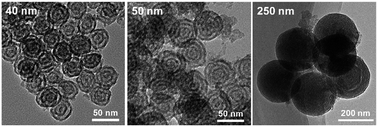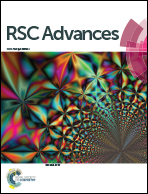Confined synthesis of three-dimensionally ordered arrays of multilamellar silica nanoparticles as a gold catalyst support†
Abstract
Three-dimensionally ordered arrays of multilamellar silica nanoparticles are prepared via confined synthesis inside ordered porous carbon, the pore size of which is varied to obtain multilamellar silica nanoparticles of about 40 nm, 50 nm, and 250 nm in size. The multilamellar silica nanoparticles have mesopores of sizes within 6.8–7.8 nm according to isothermal nitrogen adsorption–desorption measurements, and they pack three-dimensionally to give an additional set of ordered interparticle pores. Such hierarchically structured silica is exploited as the support for Au nanoparticles, whose catalytic activity is evaluated through the reduction of 4-nitrophenol monitored with UV-Vis spectroscopy. It is found that the Au nanoparticles on the multilamellar silica nanoparticle arrays show higher catalytic activity than those on non-hierarchical silica supports including SBA-15 and solid silica nanoparticle arrays.


 Please wait while we load your content...
Please wait while we load your content...